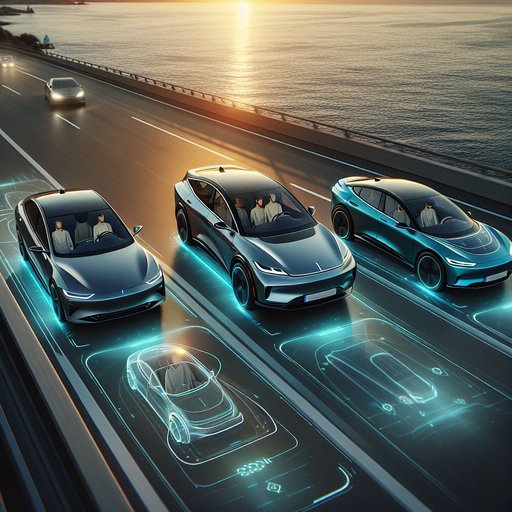
We ran a controlled 200 km highway loop to compare three mainstream driver-assistance suites—Tesla Autopilot (Model 3), Hyundai Highway Driving Assist 2 (Ioniq 5), and Ford BlueCruise 1.3 (Mustang Mach-E)—with a focus on lane-centering smoothness, hand-on-wheel detection/driver monitoring, and cut-in/cut-out behavior.
Test cars and systems: 2024 Tesla Model 3 RWD on 18-inch all-seasons with Autopilot (camera-only “Vision” stack, torque-based hand detection, interior camera active for attention monitoring); 2024 Hyundai Ioniq 5 AWD with HDA 2 (mono camera + 77 GHz front radar, blind-spot radars, torque-based hand detection plus attention warning); 2024 Ford Mustang Mach-E Premium with BlueCruise 1.3 (front camera + long-range radar, IR driver-monitor camera for hands-free in mapped Blue Zones). All three ran current public software as of test day. The loop comprised 85% limited-access divided highway (mapped Blue Zone for Ford), 15% interchanges/work zones. Ambient 19°C, dry, light crosswind.
Speed set to an indicated 115 km/h (110 km/h limit) with adaptive cruise engaged. Lane markings varied from fresh thermoplastic to faded paint; traffic ranged from free-flow to moderate, with 12 deliberate cut-ins from adjacent lanes and frequent cut-outs. Lane-centering smoothness: Ford was the calmest, holding a steady mid-lane position with minimal micro-corrections; steering inputs felt low-frequency and natural, and it tracked through sweeping curves without the “sawing” you feel in weaker systems. Hyundai was nearly as composed; it maintained a consistent offset with only minor edge bias on heavy camber, and it handled lane splits cleanly.
Tesla felt the most “busy”—precise but with frequent small-amplitude corrections on straights and a mild weave in widened lanes or near on/off-ramps. None ping-ponged, but the Mach-E delivered the least lateral jitter through the wheel. Hands-on detection and driver monitoring: Tesla still relies primarily on wheel torque; with a relaxed grip, we saw nags at 20–30 seconds on straights and sooner on curves, occasionally misreading a firm but neutral hold. The cabin camera does watch gaze, but it didn’t meaningfully extend nag intervals in our car.
Hyundai accepted a light, continuous grip and was the least naggy; gentle torque through fingertips reset prompts reliably, and it tolerated brief hand repositioning. Ford’s BlueCruise allowed true hands-free for the mapped portions; as long as gaze stayed forward, it ran for minutes without intervention. Look-away time beyond roughly 3–5 seconds triggered escalating warnings, and outside Blue Zones it reverted to conventional lane centering with standard wheel-touch prompts. Cut-in/cut-out behavior: Ford impressed with anticipatory responses; it detected signal-on merges early and eased off with a smooth 0.7–1.0 m/s² decel, rarely exceeding 0.15 g, then resumed speed progressively after the merging car stabilized.
Hyundai reacted slightly earlier than Tesla and with gentle, linear braking (about 0.8–1.2 m/s²), avoiding head-toss. Tesla tended to wait longer and then brake more assertively (peaks near 1.5–1.8 m/s² in our hardest induced cut-in), which felt abrupt to passengers but kept gap discipline tight. In cut-outs, Tesla reapplied throttle most briskly, creating a noticeable surge; Ford ramped back more smoothly; Hyundai sat in between. Phantom slows: one minor Tesla lift under an overhead sign, none for Ford/Hyundai on this route.
Overall: For the smoothest lane-centering and most natural traffic handling, Ford BlueCruise 1.3 leads—especially if you value hands-free operation in mapped zones. Hyundai HDA 2 is a close second, combining low nag frequency with polished, confidence-inspiring control. Tesla Autopilot remains precise and capable but feels more mechanical in its lane-keeping and more abrupt around cut-ins, and its torque-based hand detection can be fussy on long straights. Frequent highway users prioritizing serenity should choose Ford (where Blue Zones cover their routes) or Hyundai; drivers who prefer tighter gap control and don’t mind occasional brusqueness may be happy with Tesla.












